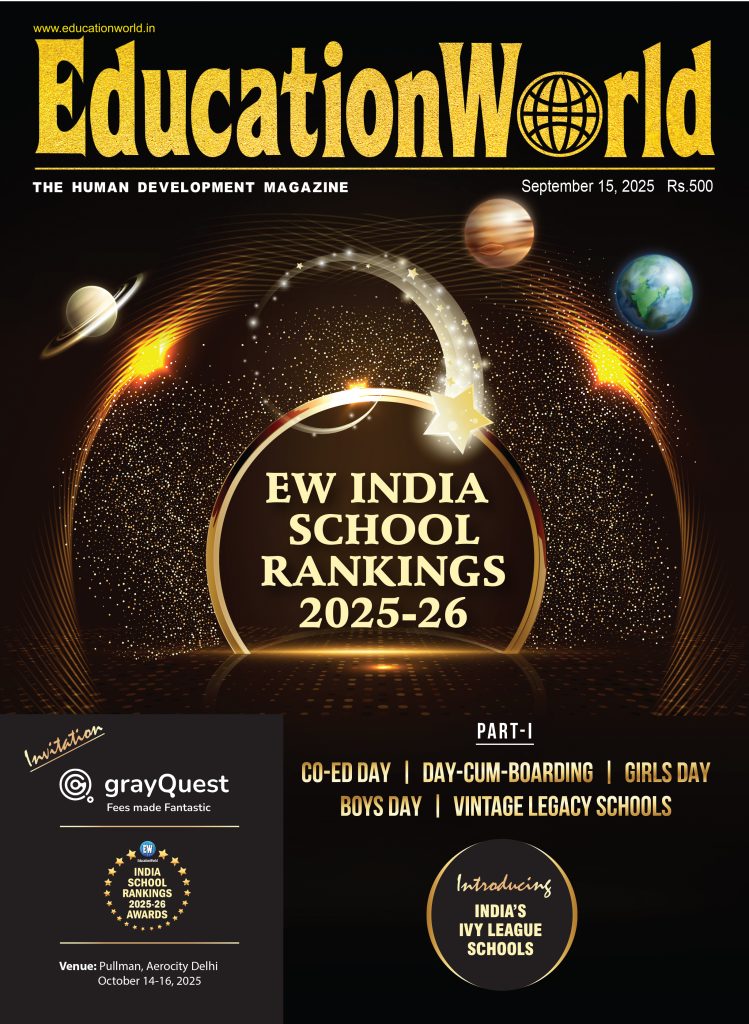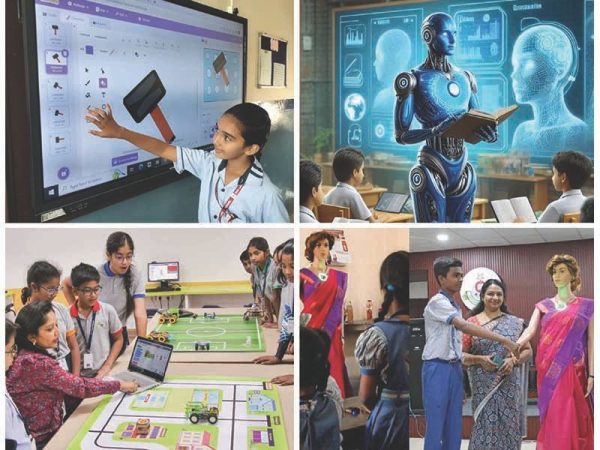Skilling India Success: Bridging the gap between education and job market demands
Sandip Weling, Chief Business Officer, Global Retail Business, Aptech
India stands at a pivotal moment in its journey toward becoming a global leader in human capital, driven b y its vast and youthful population. This demographic advantage presents immense potential, but realizing it hinges on addressing a critical challenge: the growing disconnects between what the education system delivers and what industries demand. Bridging this gap is not merely an academic concern but a foundational step toward ensuring job readiness, fostering sustainable economic growth, and securing India’s position on the world stage.
y its vast and youthful population. This demographic advantage presents immense potential, but realizing it hinges on addressing a critical challenge: the growing disconnects between what the education system delivers and what industries demand. Bridging this gap is not merely an academic concern but a foundational step toward ensuring job readiness, fostering sustainable economic growth, and securing India’s position on the world stage.
Bridging the Education-Industry Divide: A traditional education system, though comprehensive in theory, might not provide all the necessary learning to thrive in today’s dynamic job market. Sectors like technology, media, and entertainment continually struggle with skill shortages, even as the number of graduates grows. The problem stems from several factors: outdated curricula that do not fully reflect technological advancements and industry requirements, limited engagement between academia and the corporate world, and a heavy emphasis on theory over practical application. These factors leave graduates underprepared for the demands of modern workplaces. Strengthening the synergy between education providers and industries through continuous curriculum updates, practical workshops, and real-world projects is essential to addressing these concerns. Incorporating internships, industry mentorship programs, and skill-based assessments can ensure that students gain the necessary competencies before they enter the workforce.
Transformative Skill Development Initiatives: India’s response to this challenge has been a proliferation of skill development programs, driven by both governmental and private entities. Initiatives like Skill India and Pradhan Mantri Kaushal Vikas Yojana (PMKVY) have laid the necessary groundwork for equipping millions with vocational skills. These programs aim to embed training into mainstream education, ensuring that students gain hands-on experience early in their learning journey. Collaborations between public and private sectors have further strengthened this approach, with tailored training modules, internships, and apprenticeships designed to meet specific industry needs. Additionally, new-age fields such as artificial intelligence, virtual production, AVGC-XR are becoming focal points for these initiatives, positioning India as a hub for future-ready talent. Industry-specific skilling initiatives in areas such as fintech, cybersecurity, and advanced manufacturing have also gained traction, bridging the skills gap in highly specialized sectors.
Pioneers in Skilling Excellence: Several organizations have set benchmarks in aligning education with industry demands. For instance, many institutes have revolutionized media and entertainment training by designing courses that cater directly to the needs of animation, VFX, and virtual production industries. These institutes have empowered countless young people with targeted, industry-driven training programs, enhancing employability across diverse sectors – for instance – media & entertainment, beauty & wellness, hospitality & retail etc. Partnerships spearheaded by the National Skill Development Corporation (NSDC) have also played a critical role in identifying skill gaps and delivering focused training solutions. These efforts have significantly contributed to increasing employment opportunities, particularly in rural and semi-urban areas, ensuring a more inclusive and widespread impact on India’s workforce.
Technology as a Catalyst for Change: The adoption of technology has been a game-changer in India’s skilling landscape. Online and hybrid learning platforms, augmented and virtual reality simulations, and AI-powered personalized training tools have democratized access to quality education and skills. GenAI, for example, now provides real-time feedback on creative and technical projects, enabling learners to refine their craft with unprecedented accuracy and efficiency with tools like Creval. These advancements ensure that skilling is not only accessible but also tailored to individual learning needs. With micro-credentialing gaining prominence, individuals can now upskill rapidly in specific competencies, making continuous learning a seamless and effective process.
Charting the Road Ahead: To unlock its workforce potential, India needs a multi-pronged strategy. Educational institutions must align curricula with industry demands, while lifelong learning and short-term upskilling courses should be encouraged to build resilience in a dynamic job market. Policymakers must incentivise skill development and foster academia-industry collaboration to ensure global workforce competitiveness. Strengthening public-private partnerships and enhancing funding for vocational training programs can further accelerate the country’s skilling revolution. Additionally, embracing digital transformation through e-learning platforms and hybrid education models could create flexible learning opportunities for a diverse range of learners, ensuring no one is left behind in the skilling movement.
Bridging the education-employment gap is not just an economic need but a transformative opportunity. By fostering skill-based learning and embracing technological innovations, India can set global standards and inspire other nations with a model for inclusive, sustainable growth. As industries evolve and new job roles emerge, the country’s commitment to continuous skill enhancement will be the key driver in shaping a workforce that is not only employable but also future-ready.
Also read: Viksit Bharat dependent on skilling success
















Add comment